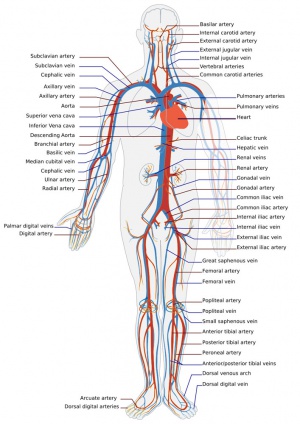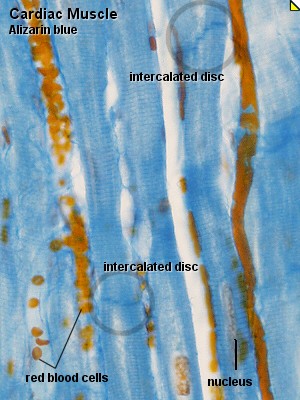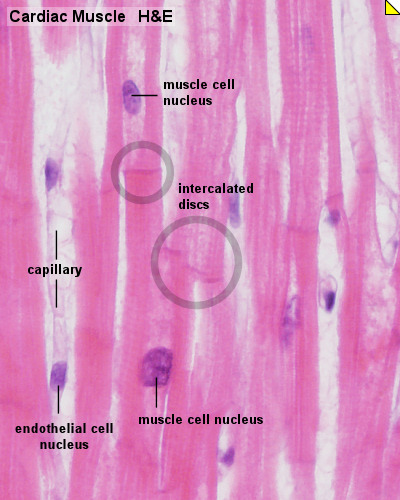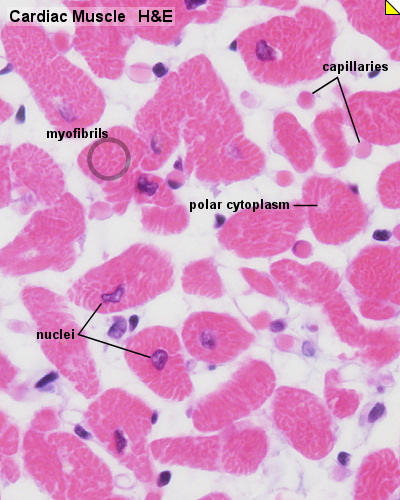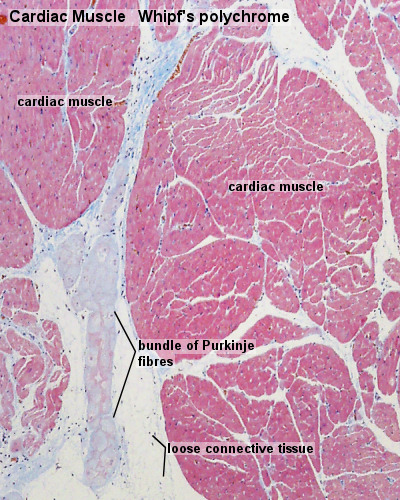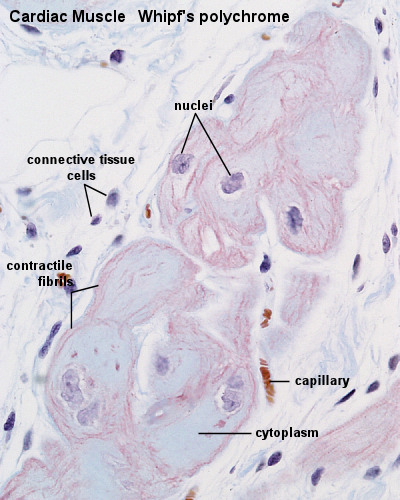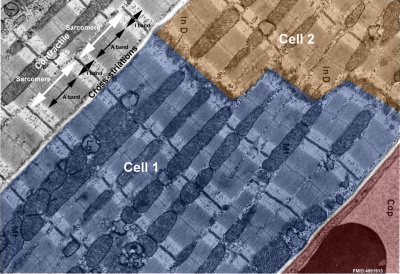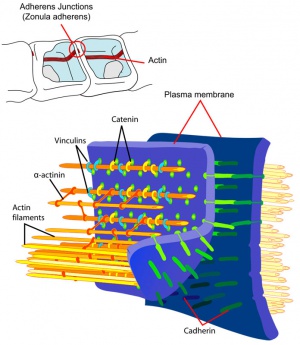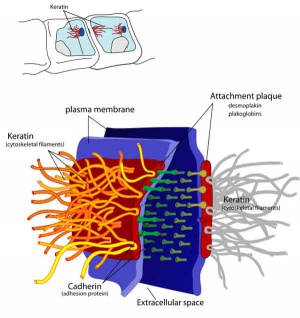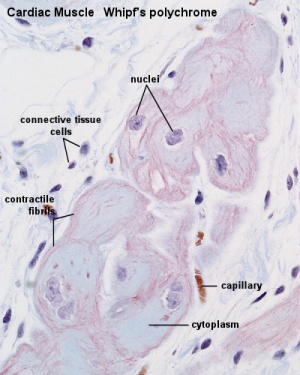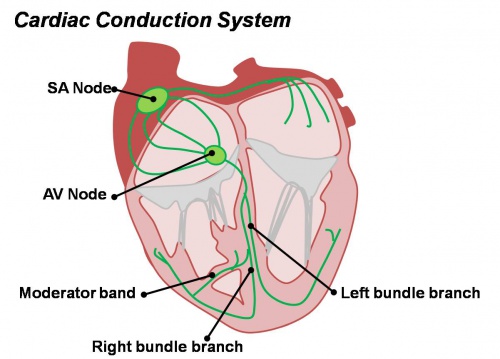HM Practical - Cardiac Histology
| Embryology - 27 Apr 2024 |
|---|
| Google Translate - select your language from the list shown below (this will open a new external page) |
|
العربية | català | 中文 | 中國傳統的 | français | Deutsche | עִברִית | हिंदी | bahasa Indonesia | italiano | 日本語 | 한국어 | မြန်မာ | Pilipino | Polskie | português | ਪੰਜਾਬੀ ਦੇ | Română | русский | Español | Swahili | Svensk | ไทย | Türkçe | اردو | ייִדיש | Tiếng Việt These external translations are automated and may not be accurate. (More? About Translations) |
Introduction
HMA Practical 8 Virtual Slides
This page provides histology support information for cardiac histology.
Disclaimers
- does not form part of the actual practical class based upon the virtual slides.
- does not cover the pathology content.
- HMA Links: Blood Vessel Histology | HM Cardiac Histology | Histology | Histology Stains | Blood Vessel Development | HMA Practical 3 Virtual Slides | HMA Practical 8 Virtual Slides
Introduction
Cardiac muscle, the myocardium, consists of cross-striated muscle cells, cardiomyocytes, with one centrally placed nucleus.
- Nuclei are oval, rather pale and located centrally in the muscle cell which is 10 - 15 µm wide.
- Cardiac muscle cells excitation is mediated by rythmically active modified cardiac muscle cells.
- Cardiac muscle is innervated by the autonomic nervous system (involuntary), which adjusts the force generated by the muscle cells and the frequency of the heart beat.
- Cardiac muscle cells often branch at acute angles and are connected to each other by specialisations of the cell membrane in the region of the intercalated discs.
- Intercalated discs invariably occur at the ends of cardiac muscle cells in a region corresponding to the Z-line of the myofibrils.
- Cardiac muscle does not contain cells equivalent to the satellite cells of skeletal muscle.
Histology
Unlabeled Images
Cardiac Layers
Endocardium
- Inner layer of the heart, contains blood vessels. Has 3 sublayers
- Endothelium - innermost portion a simple squamous epithelium.
- Smooth Muscle and Connective Tissue - middle layer of the endocardium is mix of connective tissue and smooth muscle.
- Subendocardial Layer - outer layer of the endocardium is loose connective tissue joining the endocardium and myocardium.
- equivalent to tunica intima.
Myocardium
- Middle layer of the heart, thickest contains cardiomyocytes, blood vessels.
- Muscular layer.
- equivalent to tunica media.
Epicardium
- Outer layer of the heart, contains blood vessels and lymphatics.
- Visceral layer of pericardium rather thin.
- equivalent to tunica adventitia.
Intercalated Discs
- Links: EM image - intercalated disc
Purkinje Fibres
Do not confuse these cardiac Purkinje fibres (cells) with neural Purkinje cells (neurons) located in the cerebellum.
- modified cardiac muscle cells. Compared to ordinary cardiac muscle cells:
- contain large amounts of glycogen.
- fewer myofibrils.
- thicker cells.
- can be binucleated (cell contains 2 nuclei).
- extend from the atrioventricular node, pierces the fibrous body, divides into left and right bundles, and travels, beneath the endocardium, towards the apex of the heart.
- bundle branches contact cardiac muscle cells through specialisations similar to intercalated discs.
- conduct stimuli faster than ordinary cardiac muscle cells (2-3 m/s vs. 0.6 m/s).
- discovered in 1839 by Jan Evangelista Purkyně).
Cardiac Valves
Note for the Semilunar valve slide is not anchored to the walls of the atria by chordae tendineae.
Only the mitral and tricuspid valves, located between the atria and the ventricles, are connected to the cardiac wall by chord tendineae and papillary muscles.

|

|
- Links: Heart Histology | Cardiac AZB Labeled | Cardiac AZB | Cardiac label LS | Cardiac LS | Cardiac label TS | Cardiac TS | Purkinje fibres | Purkinje fibres detail | Histology
Terms
- cardiomyocyte -
- chordae tendineae - tricuspid and mitral valves connective tissue bands attached on the other end to the papillary muscles.
- intercalated disc -
- nodule - (of semilunar valve) small fibrous nodules located in the middle of the flaps, the nodules of the semilunar valve come closely together to fill the triangular opening.
- Purkinje fibres -
Glossary Links
- Glossary: A | B | C | D | E | F | G | H | I | J | K | L | M | N | O | P | Q | R | S | T | U | V | W | X | Y | Z | Numbers | Symbols | Term Link
Cite this page: Hill, M.A. (2024, April 27) Embryology HM Practical - Cardiac Histology. Retrieved from https://embryology.med.unsw.edu.au/embryology/index.php/HM_Practical_-_Cardiac_Histology
- © Dr Mark Hill 2024, UNSW Embryology ISBN: 978 0 7334 2609 4 - UNSW CRICOS Provider Code No. 00098G
